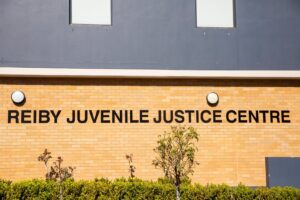
The Shocking Hazing Rituals In The Australian Armed Forces
Hazing rituals or “bastardisation” have been a feature in many institutions for generations. This is the practice of initiating young recruits by established members. It
State and Federal governments can instigate various types of inquiries. A Royal Commission has the most far reaching powers to investigate, gather evidence and question witnesses. It is commissioned in the name of the Queen by the Governor General of Australia.
A Royal Commission is bound to investigate issues set out in its “Terms of Reference”. These are the matters which the Crown wants investigated.
At times, you may find yourself wondering why the Royal Commission did not investigate a particular area of child abuse like family violence or physical abuse. This is because these issues were not included in this Commission’s Terms of Reference.
It is also important to understand that a Royal Commission is not a court. Although it looks a lot like a court and hearings are usually held in a courtroom with judges, lawyers and barristers, a Royal Commission’s sole function is to investigate, collect information and provide recommendations to governments and institutions.
Royal Commission hearings are much more flexible than courts. They are not bound by rules of evidence. Witnesses can be directly questioned by Commissioners and procedures can be relaxed to accommodate the needs of survivors.
However, it is also important to realise that the Royal Commission will not usually comment on whether an allegation is true or false, or if someone is guilty or innocent. That is a function for the courts.
In saying that, it is not uncommon for the Royal Commission to pass evidence on to police in order to assist a criminal investigation.
Former Prime Minister, the Honourable Julia Gillard, and former Attorney General, the Honourable Nicola Roxon MP announced the Royal Commission in November 2012.
The Terms of Reference were established and six Commissioners were appointed in January 2013. The first public hearing commenced in September 2013.
The Royal Commission was initially funded to run until the end of 2015, but requested a two-year extension, which was granted by the Federal Government. The Commission’s final report was handed down on 15 December 2017.
In 2015, the Royal Commission recommended that the Federal Government establish a National Redress Scheme to provide the survivors of institutional child sex abuse with equitable access to compensation.
The Scheme is funded by the offending institutions.
However, since it’s establishment, the National Redress Scheme has been a national failure.
The maximum payment available is $150,000. However, so far, the average pay-out for survivors is $83,376.
Only 15% of the expected number of applications has been received.
As of January 2021, the Scheme:
The Matrix for calculating redress payments is harsh and unforgiving. Survivors of institutional abuse are more likely to achieve the maximum payment through a civil compensation claim.
There are ten steps to claiming compensation:
1. Complete a Claimant Information Form or phone Kelso Lawyers.
2. Claim assessed for eligibility for compensation.
3. Have a personal conversation with founder and principal, Peter Kelso.
4. Receive a letter of introduction and our Conditional Costs Agreement. These documents need to be signed and returned before we commence proceedings.
5. Ensure that you have a professional and personal support network in place.
6. Case assigned to one of Kelso Lawyers’ experienced solicitors to prepare the case.
7. Make a statement.
8. Attend mediation where compensation payment will be determined and a verbal and written apology made.
9. Notify relevant Government agencies of impending compensation payment.
10. Receive compensation and an apology.
Every case is different depending on the claim – however most compensation claims are finalised in around 12 months.
No, you won’t have to face your perpetrator. You will meet with senior representatives of the church, institution, government department, but you will not have to face your abuser.
The team here at Kelso Lawyers aren’t certified medical professionals, however we have an extensive list of support services we recommend for victims of abuse.
Yes. Everyone should complete our claimant information sheet first. You don’t want to do the wrong thing and find yourself sold short or missing out on a civil claim against the institution.
Fill in our claimant information sheet first so we can assess what is the best strategy for you.
We will complete your redress form for you if redress is the better way to go. Everyone’s case is different.
Currently all the State governments, the Catholic Church, Anglican Church, Uniting Church, The Salvation Army, PCYC and Scouts Australia have signed up to the scheme.
We will assess all previous settlements to see if you are eligible for a top-up from redress. Please get in touch for more information.
The scheme has an unfair and potentially re-traumatising matrix for calculating redress payments. For example, the “extreme circumstances” payment is only available in penetrative abuse matters involving institutional vulnerability and non-sexual abuse. Psychological abuse is often overlooked.
This includes physical abuse, psychological abuse, and neglect.
It also takes into account:
During the application process, the scheme requires detailed accounts of the abuse. If any information is missed or not described accurately, the applicant could miss out on the potential for $50,000 – $60,000.
This is why it’s crucial to speak to an experienced child abuse lawyer before applying for the scheme. We can help you navigate the application process and achieve the maximum possible payment. We will support you throughout the entire process, as we know how confronting it can be.
There is no clear answer to this question. In July 2020, the Federal Opposition suggested it could take half a century for the estimated 60,000 survivors of institutional child abuse to receive redress. The Federal Opposition also said National Redress Scheme payments will decrease by $610 million by mid-2021 due to a “slower than expected uptake by survivors’ for the write-down”.
The Redress Scheme is taking applications and shelving them all until they have worked out what to do. This is an unsatisfactory answer but it’s what the Redress Scheme is telling us.

Hazing rituals or “bastardisation” have been a feature in many institutions for generations. This is the practice of initiating young recruits by established members. It

Three shocking stories have emerged from across Australia recently, exposing deep failures in youth detention and schools. From historic child sex abuse charges in Tasmania,

Allegations and convictions of historical child sexual abuse continue to emerge, with several former teachers across Australia facing serious charges. This month’s news highlights three
My life has been a bit of a rollercoaster. I had 50 years of hatred bottled away as a result of child abuse. I used
My experience with Kelso Lawyers could not possibly have been improved in any way. From the outset, all interactions were 100% professional, sensitive and supportive.
In June 2014, I gave evidence to the public hearing of the Royal Commission into Child Abuse at Christian Brother institutions. At the hearing it
74-84 Tudor Street
Hamilton NSW 2303
Mail: PO Box 1016 Hamilton NSW 2303
t: (02) 4907 4200
f: (02) 4929 1188
e: adminteam@kelsos.com.au
Liability limited by a scheme approved under Professional Standards Legislation. Legal practitioners employed by Kelso Lawyers are members of the scheme. Click here for our Disclaimer and Privacy Policy.